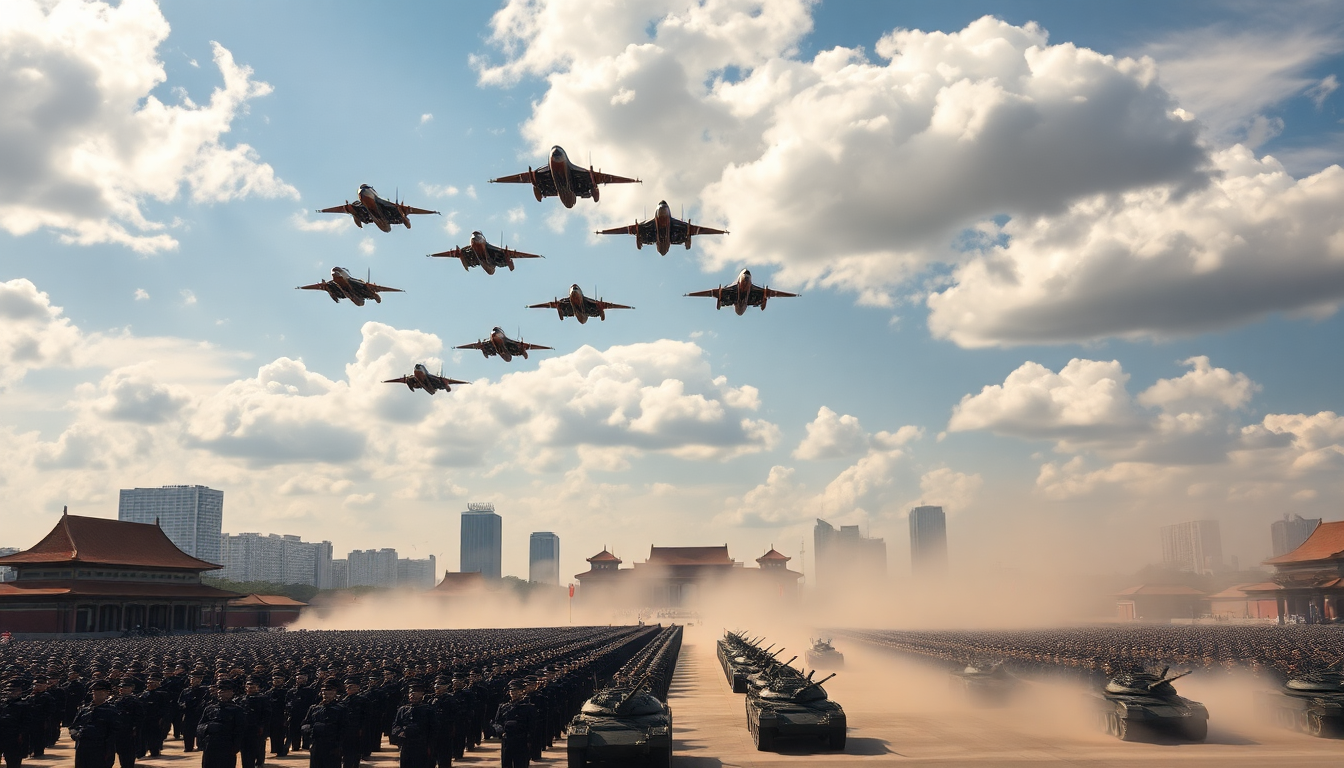Table of Contents
Next month, Beijing is gearing up for a grand military parade to celebrate the 80th anniversary of the end of World War II. But this isn’t just about looking back; it’s also a chance for China to show off its latest military tech. With hundreds of aircraft—including fighter jets and bombers—taking to the skies, and ground forces flaunting cutting-edge weaponry, this parade promises to be a defining moment for the People’s Liberation Army (PLA) and the country’s defense capabilities.
Unveiling New Military Technology
Chinese military officials have confirmed that the parade will showcase a variety of exciting new fourth-generation military equipment. Reports from state media highlight advanced tanks, carrier-based aircraft, and a collection of fighter jets organized into operational modules. This setup is designed to demonstrate the PLA’s system-based combat capabilities. It’s not just a flashy display; it’s a strategic move to underline China’s military readiness and technological prowess in a way that mirrors real combat scenarios.
But what’s the real takeaway here? This event goes beyond mere spectacle. It’s a concentrated showcase of domestically produced weaponry that forms the backbone of China’s active-duty military forces. As the world tunes in, the spotlight on indigenous production illustrates China’s push for self-sufficiency in defense technology—an increasingly vital component of its military strategy. Isn’t it fascinating how much of this technology is homegrown?
Regional and Global Implications
Set for September 3, this military parade will be the second of its kind since 2015, marking the formal surrender of Japanese forces in 1945. Foreign military attaches and security analysts are eagerly anticipating the reveal of China’s new military capabilities, especially advancements in missile technology like anti-ship missile systems and hypersonic weapons. These developments could reshape regional security dynamics, particularly in the context of China’s relations with the United States and its allies. How will the world respond to this show of force?
Adding a layer of geopolitical intrigue, foreign dignitaries, including Russian President Vladimir Putin, will be in attendance. With heightened security measures already implemented across downtown Beijing, it’s clear the Chinese government views this parade as more than just a national celebration; it’s a strategic showcase of military strength.
Security and Preparations for the Event
Since early August, Chinese authorities have ramped up security preparations for the parade. This includes setting up checkpoints, rerouting traffic, and temporarily closing shopping malls and office buildings around Tiananmen Square. These precautions underscore just how important it is for the event to go off without a hitch. A smooth parade is crucial, especially in times where military displays can shift perceptions and influence international relations.
The parade is expected to last around 70 minutes, featuring 45 contingents of troops marching past President Xi Jinping. As the nation’s leader, Xi’s presence will reinforce the themes of strength and unity the parade aims to project. In a world where military displays can have far-reaching implications, this event is positioned to be a pivotal moment for China on the global stage. Are you ready to see how this unfolds?


